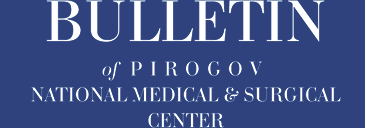Authors
Yepifanov S.A., Shtempel M.S., Mironyuk Yu.D.
Pirogov National Medical and Surgical Center, Moscow
Abstract
Total endoprosthetics of the temporomandibular joint (TMJ) is an important area in the treatment of patients with severe joint pathologies, including ankylosis, arthritis, arthrosis, injuries and congenital anomalies. The article examines the historical aspects of the development of this technique, starting with the first mentions of TMJ pathologies in ancient times and ending with modern prosthetics technologies such as CAD/CAM.
The authors describe the evolution of approaches to the treatment of joint dysfunctions, including the use of various materials such as metals, silicone, Teflon and polymers. Special attention is paid to their advantages and disadvantages, including biocompatibility, durability and side effects.
The paper presents the key stages of the development of endoprosthetics methods: from the removal of the affected joint to the development of modular implants. The results of using materials such as Silastic, Proplast and Teflon, as well as the impact of these technologies on the state of bone structures and the overall function of the joint are considered.
Keywords: temporomandibular joint (TMJ), ankylosis, implant, total arthroplasty, CAD/CAM.
References
1. Schwartz L. Historical references to TMJ pathologies in ancient manuscripts. Journal of Maxillofacial Research. 1998; 32(3): 215-222.
2. Holmes C. Description of joint diseases and treatment methods. Paris: Medical Heritage Press, 1597. Р.45-60.
3. Perry HT. Temporomandibular joint dysfunction: from Costen to the present. Ann Acad Med Singap. 1995; 24(1): 163-7.
4. Wesolowski SA, Martinez A. The use of silicone in TMJ surgery: materials and results. Dow Corning Medical Publication, 1966. Р.50-72.
5. Cook J. Polymers in TMJ arthroplasty: advantages and limitations. Journal of Oral and Maxillofacial Surgery. 1972; 30(2): 178-190.
6. Bronstein HE. Proplasty and TMJ reconstruction: a critical analysis. Oral Health Journal. 1987; 15(4): 88-95.
7 Eriksson L., Westesson PL. TMJ disc implants and Results: 5-year X-ray follow-up. Journal of Oral Surgery. 1992; 50(5): 312-319.
8. Henry S, Wolford L. Radiological changes in TMJ implants after 5 years of use. Journal of Maxillofacial Surgery. 1992; 51(1): 12-18.
9. Li, Lan Y, Fei S, Jianping S, et al. In situ repair of bone and cartilage defects using 3D scanning and 3D printing. Scientific Reports. 2017; 7. doi: 10.1038/s41598-017-10060-3.
10. Epifanov S, Ruidel D. Total temporomandibular joint replacement with use of custom 3-D printed TMJ prosthetics. Craniomaxillofacial Trauma & Reconstruction. 2020; 13(3): 19.
11. Smith L, Robinson P. Bioprinting in medicine: The future of temporomandibular joint prosthetics. Journal of Medical Innovations. 2022; 37(2): 45-51.
12. Lewis D, Turner M, Clark J. Robotic-assisted temporomandibular joint replacement surgery: A review of the latest innovations. Journal of Robotic Surgery. 2017; 11(2): 67-73.
13. Epiphanov SA, Poliakov AP, Skuredin VD. Tmj prosthesis. Vestnik Natsionalnogo mediko-khirurgicheskogo Tsentra im. N.I. Pirogova. 2014; 9(4): 17-22. (In Russ.)
14. Sysolyatin PG, Sysolyatin SP, Baidik OD, Ilyenok OV. History of the development of temporomandibular joint surgery. Bulletin of Siberian medicine. 2016; 5(2): 98-111. (In Russ.)
15. Epiphanov SA, Skuredin VD. The evolution of total endoprosthesis of the temporo-mandibular joint. Vestnik Natsionalnogo mediko-khirurgicheskogo Tsentra im. N.I. Pirogova. 2018; 13(2): 141-145. (In Russ.)
16. Epifanov SA. Disorders of the temporomandibular joint – it’s an interdisciplinary problem: rethinking established concepts in the practice of a maxillofacial surgeon. Vestnik Natsionalnogo mediko-khirurgicheskogo Tsentra im. N.I. Pirogova. 2020; 15(3 part 2): 102-105. (In Russ.)
17. Epifanov SA, Matveev SA, Kraynyukov PE, et al. Autogenic fibrin matrices: prospects for use in surgery. Genes and cells. 2021; 16(2): 71-74. (In Russ.)


